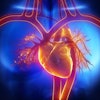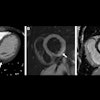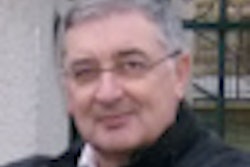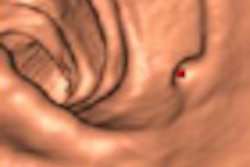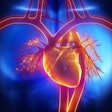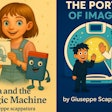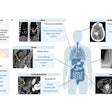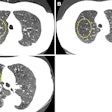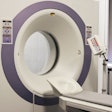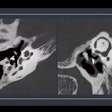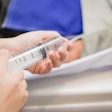VIENNA - As radiographers in Europe increasingly take over tasks once reserved for radiologists, investigators continue to find that their skills are often equivalent to if not better than those of their physician partners.
Several examples of radiographers' increasing confidence with high-level tasks were in evidence at Saturday's radiography presentations at the European Congress of Radiology (ECR). Among them, researchers from Portugal found that radiographers were equivalent to radiologists and better than vascular surgeons in measuring abdominal aortic aneurysms (AAAs) in preparation for endovascular aortic repair (EVAR) procedures. And in a study from Ireland, radiographers bested nonradiologist physicians in calling abnormal images of the wrist and head, but they managed to bring the physicians up to speed with collaboration.
Measuring AAAs
Radiographers are taking over tasks that were once "exclusively in the physician's domain ... in order to optimize human resources and workflow," said Margarida Ribeiro, a doctoral student from Escola Superior de Technologia da Saúde in Lisbon, Portugal.
One increasingly common task requiring great accuracy is the measurement of AAAs in patients being examined for EVAR procedures, which are less invasive than open surgery but require a precision custom-designed stent graft for each patient that is manufactured before the procedure based on CT images now acquired by radiographers. But until recently, measurement of the aneurysms themselves was the exclusive province of radiologists and vascular surgeons.
"The vascular measurements for abdominal aortic stent graft are now replicated by different health professional groups," Ribeiro said. "The aim of this study was to calculate the interobserver variability between three professional groups: radiographers, radiologists, and vascular surgeons."
CT images in the study were acquired and measured "under time pressure," with the AAA located in the infrakidney position on every abdominal CT scan. The images were acquired on a Somatom (Siemens Healthcare) CT scanner using 2.5-mm collimation and 1.2-mm reconstruction intervals. For each patient, six measurements of diameter and length were performed using a DICOM-based software package. The 12 observers -- four radiographers, four radiologists, and four vascular surgeons -- made a total of 480 observations from AAA patients. All readers had 10 to 14 years of professional experience.
Statistical analysis of the three groups' performance included Bland-Altman and analysis of variance tests.
The results showed a mean variance of 1.55 ± 3.39 mm for vessel diameters and 3.38 ± 5.39 for distances. Seventy-five percent of all measurements were within 2 mm of each other, and only 4.2% of the measurements had differences of 5 mm or larger, Ribeiro said.
Analyzing diameter and length measurements of the various professional groups using a Bland-Altman test, including radiographers versus radiologists, radiographers versus vascular surgeons, and radiologists versus vascular surgeons, "the lowest variation occurred between radiographers and radiologists on both measurements, diameters (0.52 mm) and length (1.09 mm)," she said.
The largest variations occurred between radiologists and vascular surgeons in diameter (1.15 mm) and between radiographers and vascular surgeons, "however, these values were not significantly different (p > 0.05)," Ribeiro said.
Comparing professions as a whole, the mean differences within each professional group was largest among vascular surgeons at 2.10 mm, while radiologists and radiographers showed lower values.
The results leave many questions about whether the measurement differences have any clinical significance, and why different groups show distinct differences, Ribeiro noted.
One preliminary conclusion is that the measurements should be performed by a single professional group, she said. "Measurements made by radiographers are as reliable as those made by radiologists and vascular surgeons, so we have competence to do that," Ribeiro said. "For the future, however, "changing the distribution pattern of functions will require further reflection and wider multidisciplinary discussions and learning."
Cooperation boosts quality
In judging clinical wrist and head images to be either normal or abnormal, radiographers outperformed junior doctors significantly, according to another ECR presentation by radiographer Jonathan McNulty from University College Dublin School of Medicine and Medical Science in Dublin, Ireland. However, collaboration between the two evened out the scores, he said.
"As we all know, research has shown an 11% reduction in incorrect emergency department reports following the introduction of radiographer reporting systems, predominantly in the U.K." McNulty said. However, "the benefits of reporting radiographer systems are not being reaped in many countries, including the Republic of Ireland and many other European jurisdictions," he added.
Radiographers have more exposure to radiological exams in their training than most nonconsultant hospital doctors, he said. "That is a strength that we as radiographers have when it comes to image interpretation when we're working alongside nonconsultant and nonradiology hospital doctors."
"Do better together" is another increasingly validated concept among healthcare professionals as the value of training together is demonstrated in study after study, he said.
"The hope is that when they eventually enter the workforce that interdisciplinary training will flow through ... and ultimately benefit the patients," McNulty said.
Toward that end, the study aimed to determine if collaboration between radiographers and junior doctors (nonconsultant hospital doctors [NCHD]) impacts diagnostic accuracy in the emergency department of a teaching hospital.
Ten pairs of participants, each consisting of a radiographer and an NCHD, examined 42 wrist radiographs and 40 noncontrast head CT scans, each a mix of normal and abnormal, difficult, and more obvious cases.
For the wrists, participants were asked to determine if there was a fracture. For the head CT scans, the participants were asked to determine if they were "normal or abnormal, and what they're being asked to identify ... [was] the presence or absence of any fresh intracranial hemorrhage," McNulty said.
The participants examined the images alone at first, then in pairs; more experienced radiographers were paired with more experienced NCHDs. A receiver operating characteristics (ROC) curve was used to analyze performance, and results were compared using one-way analysis of variance.
The Java-based Viewer for Digital Evaluation of X-ray images (ViewDEX) software "allows them to rate their confidence as to whether pathology is present," McNulty said.
While the radiographers showed no significant improvement working with the NCHDs, collaboration did improve the NCHDs' performance, McNulty said.
The results showed significant improvements in the area under the curve (AUC) values of the NCHDs when working with the radiographers on both the wrist (p < 0.008) and head (p < 0.0026) images that were viewed by randomly selected readers with random cases.
|
AUC results for head and wrist showed higher accuracy for radiographers versus NCHDs and improved results following collaboration.
"Collaboration showed the greatest diagnostic accuracy about 60% of the time" in the wrist and 80% of the time in the head CTs, McNulty said.
"These positive findings of improved diagnostic performance really set the scene for further research in this area in terms of a range of imaging modalities and examinations and a range of medical specialties, not just the emergency department, but also other healthcare professions: physiotherapist ... anyone who's involved in image interpretation" he said. The results also suggest that further training for NCHDs should be considered, he noted.
